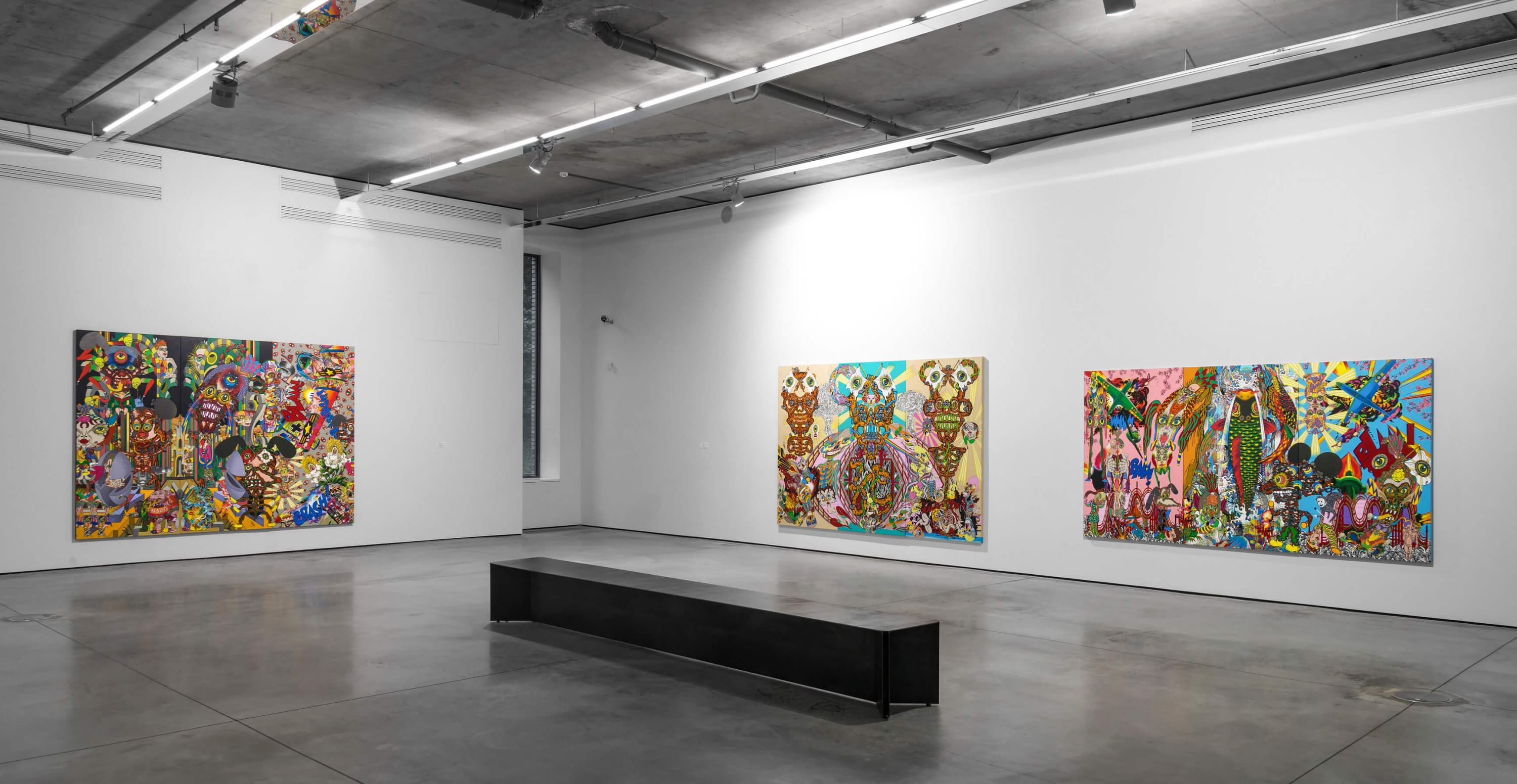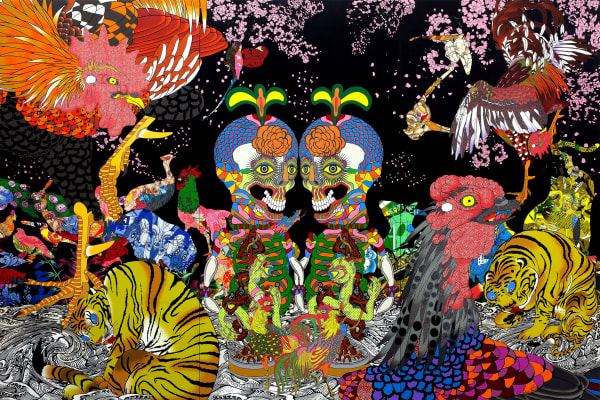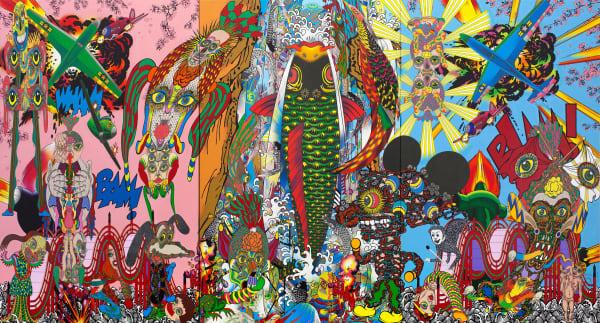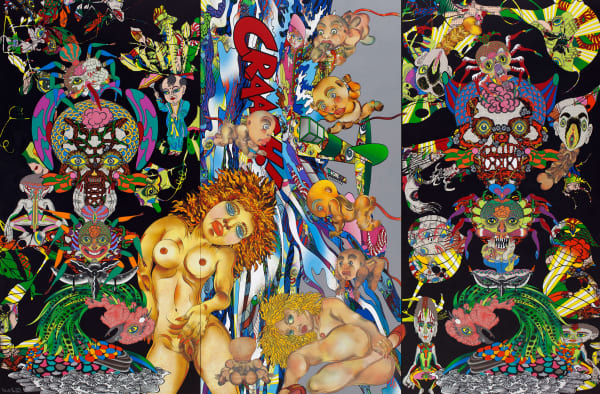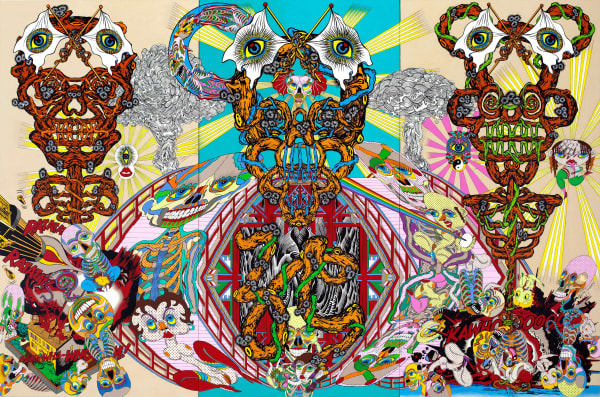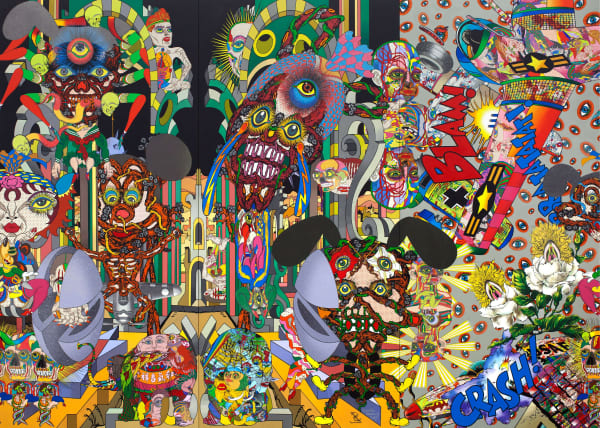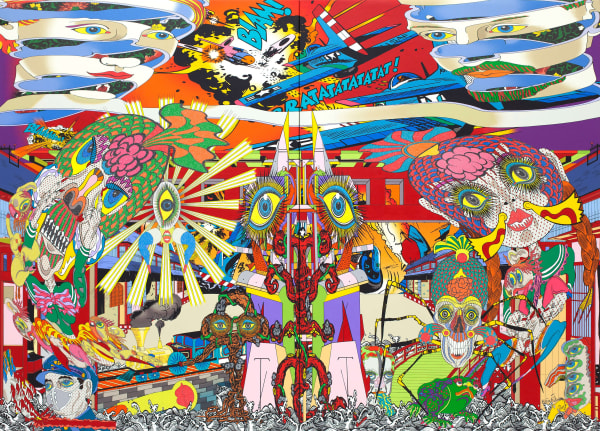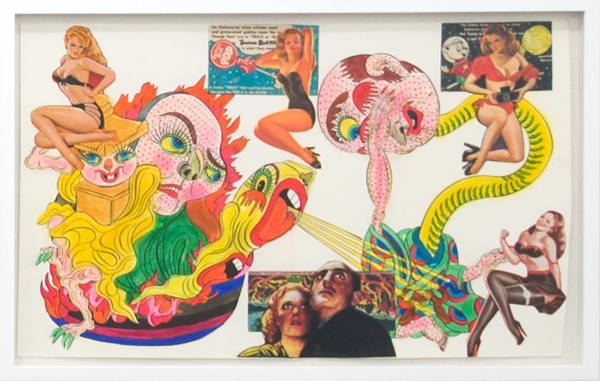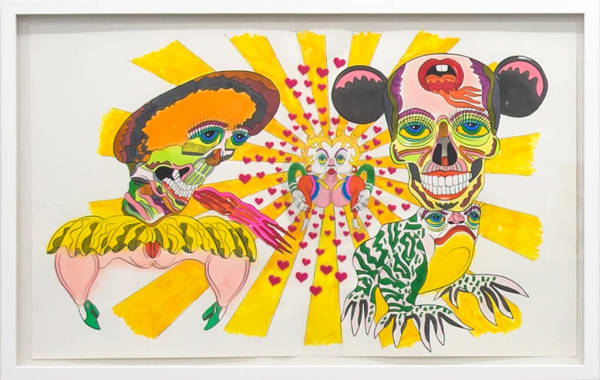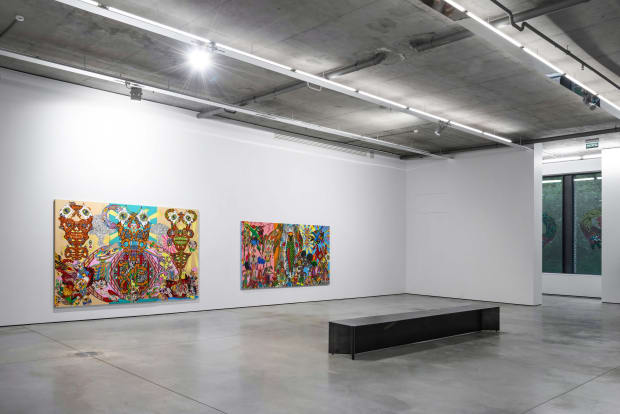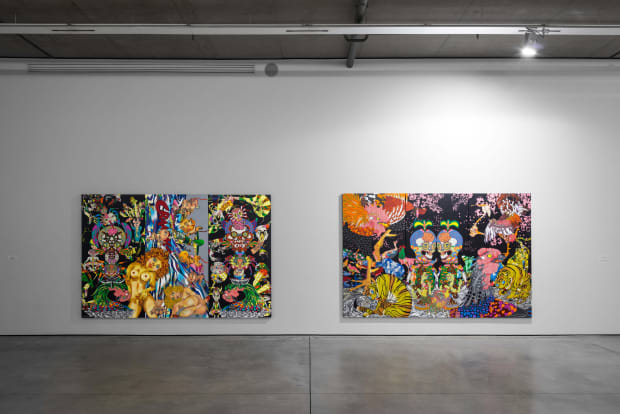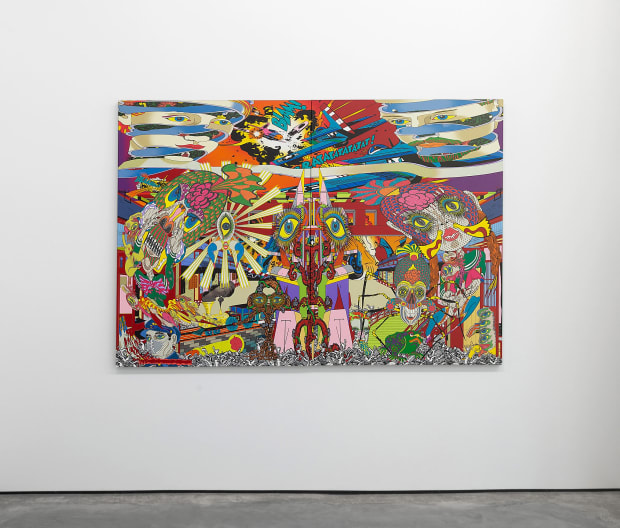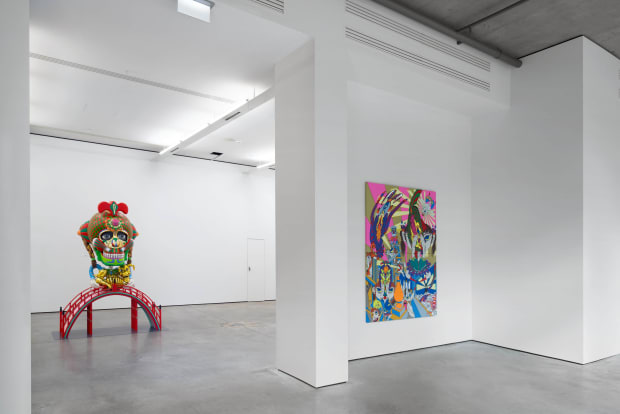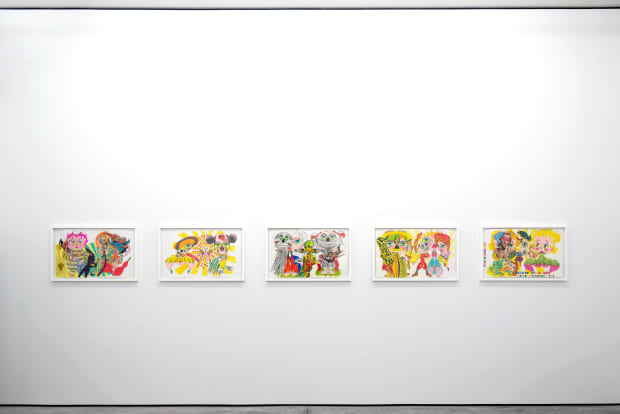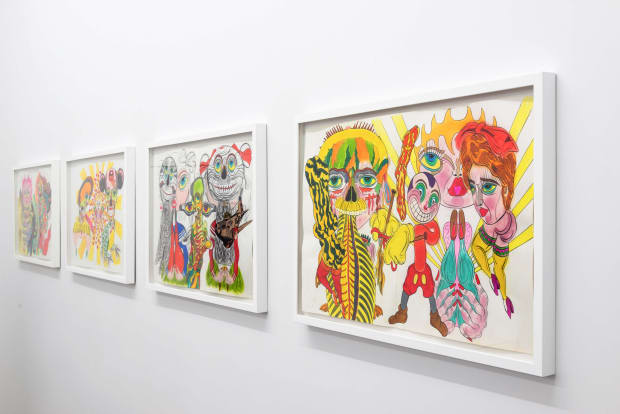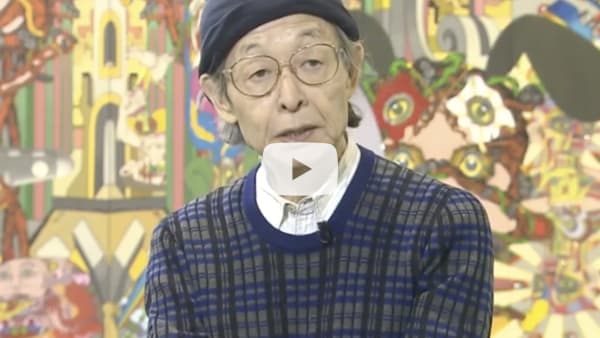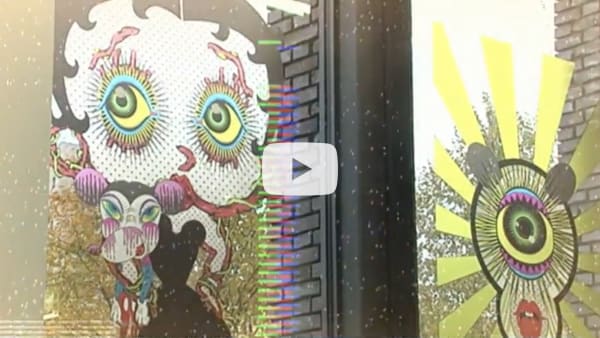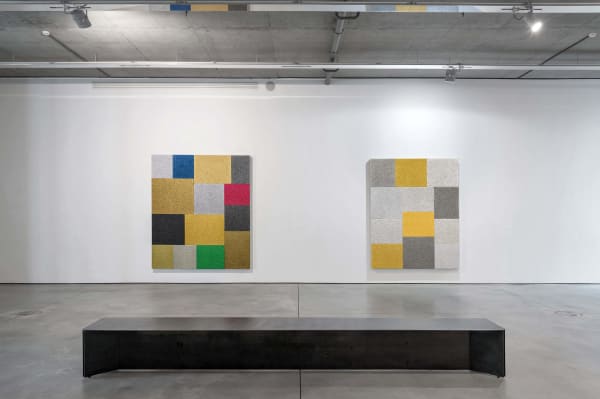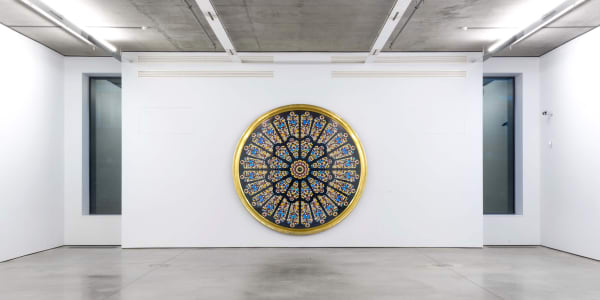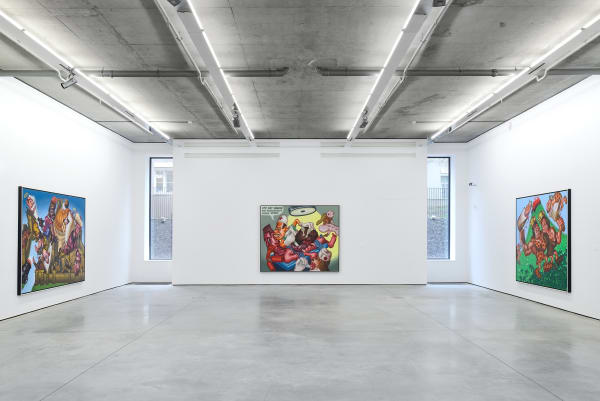Keiichi Tanaami. Land of Mirrors: Personal Exhibition
-

“Most of the characters in my works are based on my own life experience. A myriad of trials, events and meetings that have affected me … they all make up the key elements of my works.”
– Keiichi Tanaami -
Keiichi Tanaami
DOWNLOAD PRESS RELEASE
CONTACT
 Email
Email
 Serebryanicheskaya Emb., 19, Moscow
Serebryanicheskaya Emb., 19, MoscowKeiichi Tanaami is a legendary pop artist from postwar Japan, renowned for his contributions to various artistic genres, including graphic design, illustration, video, sculpture, and painting. Born in Tokyo in 1936, Tanaami experienced the devastating Great Tokyo Air Raid during World War II when he was just nine years old. This traumatic event had a profound impact on his future artistic endeavors, drawing inspiration from the eclectic and surreal images etched into his memory.
-
-
Throughout his career, Tanaami explored different mediums and styles, showcasing his versatility and innovation. At the start of his journey, he turned to American experimental film, creating works such as Good-by Elvis and USA (1971). He actively engaged with prominent figures in the art world, participating in happenings organized by Yoko Ono and collaborating on video projects with Nam June Paik. His creative talent extended to illustration and graphic design for fashion magazines, and he was an active participant in the Neo-Dada movement, collaborating with notable artists such as Ushio Shinohara, Robert Rauschenberg, and Michel Tapié.
-
Exhibited Works
-
 Keiichi TanaamiWhat the Shadows Imply, 2017Pigmented ink, acrylic silkscreen medium, crashed glass, glitter acrylic paint, acrylic paint on canvas216 x 300 x 4 cm
Keiichi TanaamiWhat the Shadows Imply, 2017Pigmented ink, acrylic silkscreen medium, crashed glass, glitter acrylic paint, acrylic paint on canvas216 x 300 x 4 cm -
 Keiichi TanaamiTransport Machine, 2017Pigmented ink, acrylic silkscreen medium, crashed glass, glitter acrylic paint, acrylic paint on canvas144 x 200 x 4 cm
Keiichi TanaamiTransport Machine, 2017Pigmented ink, acrylic silkscreen medium, crashed glass, glitter acrylic paint, acrylic paint on canvas144 x 200 x 4 cm -

-

-
-
-
“Warhol was in the process of shifting from commercial illustrator to artist, and I both witnessed and experienced firsthand his tactics, his method of incision into the art world. His strategies were identical to the strategies employed by advertising agencies. He used contemporary icons as motifs in his works and for his other activities put together media such as films, newspapers and rock bands. In other words, Warhol’s sole existence was selling his works to the art market. I was shocked by this, and at the same time I embraced him as the perfect role model for myself. Like Warhol, I decided not to limit myself to one medium, to fine art or design only, but instead to explore many different methods.”
– Keiichi Tanaami -
-
In addition to his artistic pursuits, Tanaami has played a significant role as a professor at Kyoto University of Art and Design since 1991, influencing and inspiring generations of young artists with his innovative and multifaceted approach to art.
Among Tanaami’s personal projects are Hammer Projects: Oliver Payne and Keiichi Tanaami at Hammer Museum (Los Angeles, CA, USA); No More War at Schinkel Pavillon (Berlin, Germany) (2013) and at Art 42 Basel (2011); and Still in Dream at Frieze Art Fair (2010).
Tanaami’s works can be found in museums and institutions such as the Museum of Modern Art (MoMA) (New York, NY, USA); Tate Modern (London, UK); Stedelijk Museum (Amsterdam, Netherlands); The Art Institute of Chicago (Chicago, IL, USA); National Portrait Gallery (Washington, D.C., USA); Friedrich Christian Flick Collection (Switzerland); M+ Museum for Visual Culture (Hong Kong, China); Kawasaki City Museum (Kawasaki, Japan); and Dresden Museum of Modern Art (Dresden, Germany).
-
-
Video
-
Artist
-
-
Explore more
